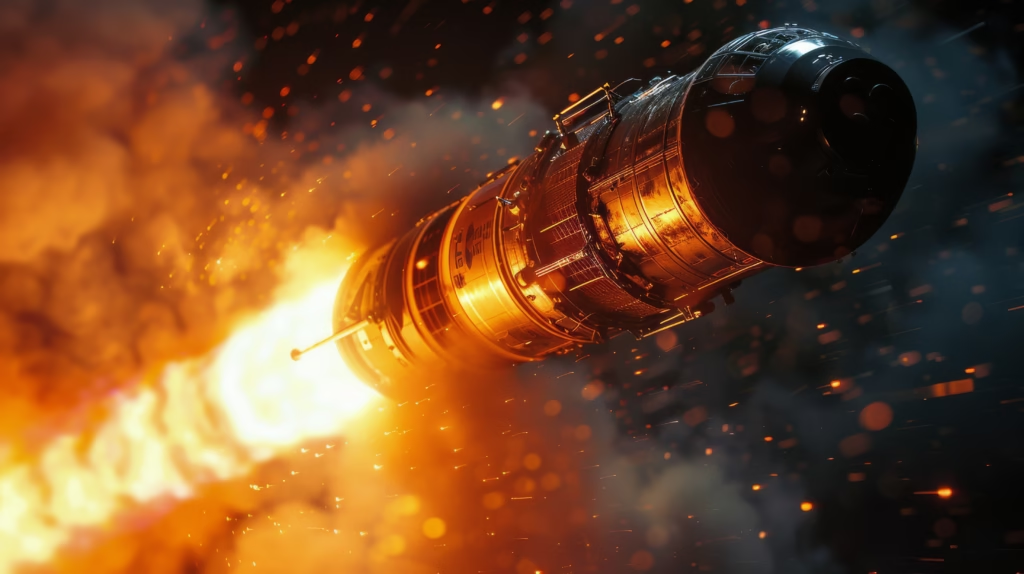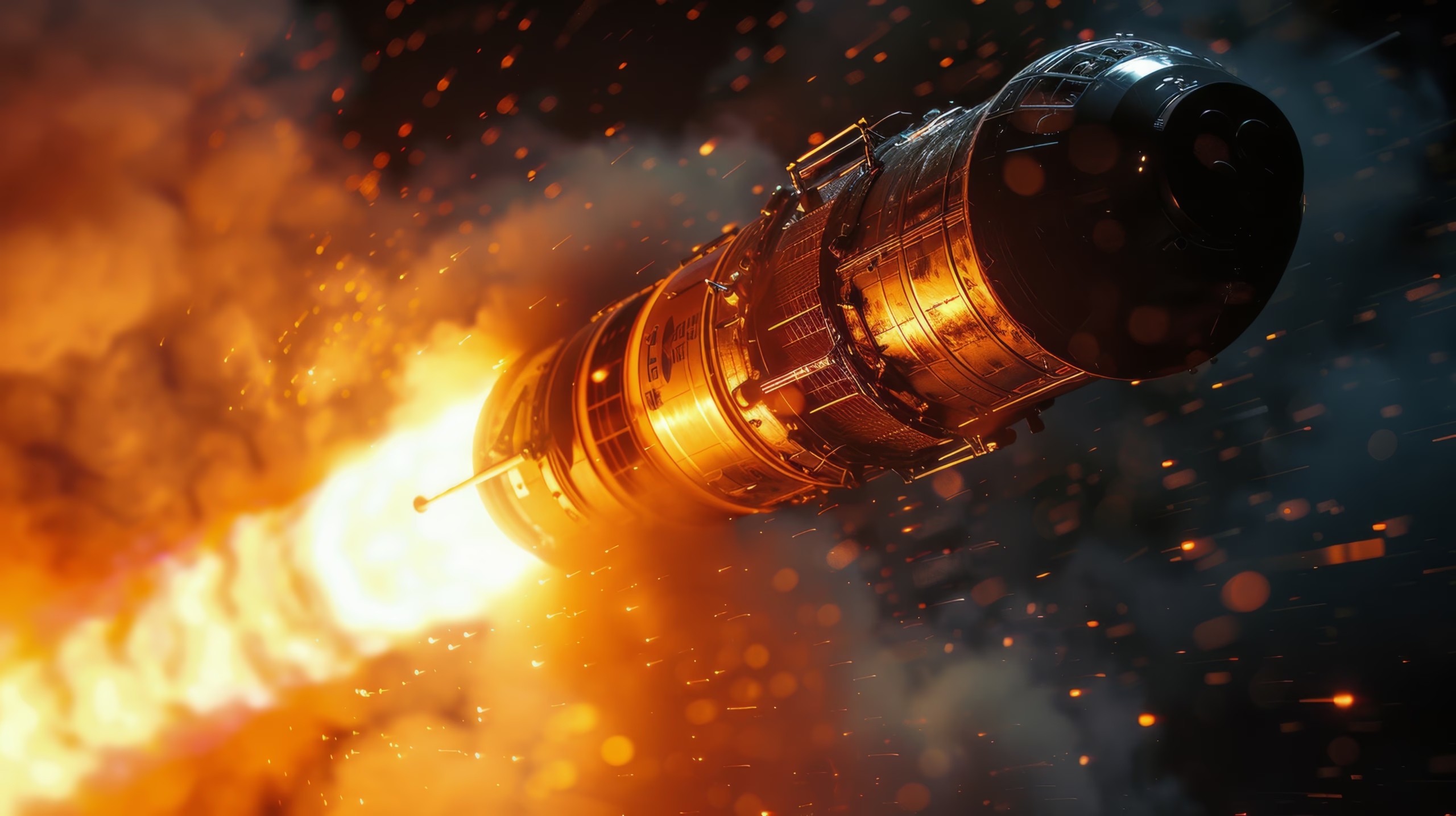Propulsion systems are the backbone of space exploration. Without them, spacecraft wouldn’t be able to launch, travel through space, or return to Earth. These systems drive the rockets that take astronauts to the moon, satellites into orbit, and rovers to Mars. As technology evolves, propulsion systems become increasingly sophisticated, making space travel faster, more efficient, and more sustainable. In the USA, innovation in propulsion systems plays a crucial role in maintaining its leadership in space exploration.
What Are Propulsion Systems? A Key to Space Exploration
Propulsion systems are technologies that provide the necessary force to propel spacecraft. These systems work by expelling mass at high speeds, which, through Newton’s third law of motion, pushes the spacecraft in the opposite direction. In space, there’s no air to push against, so propulsion systems must rely on other mechanisms like chemical reactions, electric fields, or nuclear power to create thrust. Essentially, they are the engines that power rockets, satellites, and space probes, enabling humanity to explore distant worlds.
How Propulsion Systems Power the USA’s Space Missions
In the USA, propulsion systems are integral to every space mission, from launching satellites to exploring Mars. NASA, SpaceX, and other U.S. space organizations rely on advanced propulsion technology to carry out their objectives. These systems provide the thrust needed to escape Earth’s gravity and journey to other celestial bodies.
For instance, SpaceX’s Falcon 9 rocket uses powerful engines that allow it to lift payloads into orbit, while NASA’s Mars rovers are powered by propulsion systems that drive them across the Martian surface. Although, The success of these missions depends heavily on efficient propulsion technology.
NASA’s Artemis Program: Fueling the Next Moon Mission
NASA’s Artemis program aims to return humans to the moon and establish a sustainable presence there by the mid-2020s. Propulsion systems are central to this mission’s success. Although, The Space Launch System (SLS), NASA’s next-generation heavy-lift rocket, uses powerful chemical propulsion systems to send astronauts to the moon. However, This launch vehicle is designed to carry large payloads and crew modules for deep space exploration.

Additionally, new propulsion technologies will be key to NASA’s plans for lunar landings, as they’ll need to provide the necessary thrust for astronauts to descend and ascend from the moon’s surface.
Propulsion Systems: Advancing USA’s Plans for Mars Exploration
Mars exploration is a top priority for the USA, with NASA’s Perseverance rover and SpaceX’s Starship leading the charge. Propulsion systems will play a vital role in getting us to the Red Planet. NASA’s Mars Science Laboratory used a combination of chemical propulsion for launch and aerodynamic braking for landing. However, as we plan for human missions to Mars, we’ll need more advanced propulsion technology that can support longer journeys.
However, SpaceX’s Starship aims to use powerful rocket engines to land humans on Mars and return them to Earth, showing the USA’s commitment to pushing the limits of space tech.
The Future: What’s Next for USA’s Space Tech?
The future of propulsion systems is incredibly exciting. As technology advances, the USA is exploring new forms of propulsion that could revolutionize space travel. Nuclear thermal propulsion is one such innovation, offering greater efficiency and faster travel times for deep space missions. The USA is also investing in ion propulsion systems, which are ideal for long-duration missions. Although, These new systems could reduce the cost of space exploration and make interplanetary travel more feasible.
In addition, solar sails, which use the pressure of sunlight to propel spacecraft, are being tested for future use. As these technologies mature, the possibilities for space exploration will expand exponentially.
The Evolution of Propulsion Systems in USA’s Space Tech Industry
Over the years, propulsion systems have evolved from basic chemical rockets to highly advanced, energy-efficient engines. The Apollo missions relied on chemical propulsion for lunar landings, while modern-day missions like SpaceX’s Falcon Heavy use even more advanced systems to carry heavier payloads. However, The evolution of propulsion technology has made space travel safer, more reliable, and more cost-effective.
Today, both public and private companies in the USA are focused on developing next-generation propulsion technology that can take us to the moon, Mars, and beyond. These advancements reflect the growing sophistication of space technology.
Evaluating the Long-Term Impact of Propulsion Systems on Space Tech Growth
In conclusion, propulsion systems are at the heart of the USA’s space exploration efforts. From the early days of the Apollo missions to the modern breakthroughs seen in NASA’s Artemis program and SpaceX’s Starship ambitions, propulsion technology has enabled humanity to push beyond Earth’s boundaries. Looking ahead, the USA’s continued investment in advanced propulsion technology will play a central role in future space missions, including Mars exploration and even interstellar travel.
As propulsion technology evolves, it will unlock new possibilities for space exploration, pushing the USA to the forefront of this exciting new frontier.

